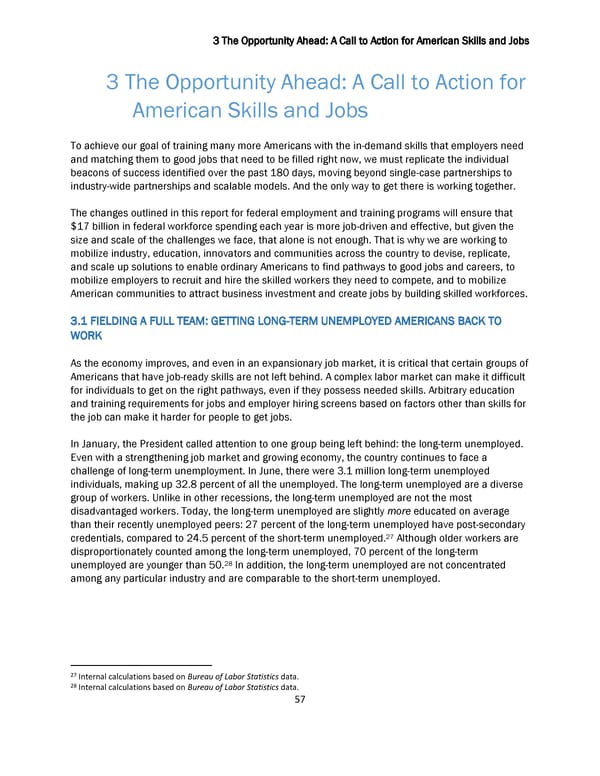3 The Opportunity Ahead: A Call to Action for American Skills and Jobs 3 The Opportunity Ahead: A Call to Action for American Skills and Jobs To achieve our goal of training many more Americans with the in-demand skills that employers need and matching them to good jobs that need to be filled right now, we must replicate the individual beacons of success identified over the past 180 days, moving beyond single-case partnerships to industry-wide partnerships and scalable models. And the only way to get there is working together. The changes outlined in this report for federal employment and training programs will ensure that $17 billion in federal workforce spending each year is more job-driven and effective, but given the size and scale of the challenges we face, that alone is not enough. That is why we are working to mobilize industry, education, innovators and communities across the country to devise, replicate, and scale up solutions to enable ordinary Americans to find pathways to good jobs and careers, to mobilize employers to recruit and hire the skilled workers they need to compete, and to mobilize American communities to attract business investment and create jobs by building skilled workforces. 3.1 FIELDING A FULL TEAM: GETTING LONG-TERM UNEMPLOYED AMERICANS BACK TO WORK As the economy improves, and even in an expansionary job market, it is critical that certain groups of Americans that have job-ready skills are not left behind. A complex labor market can make it difficult for individuals to get on the right pathways, even if they possess needed skills. Arbitrary education and training requirements for jobs and employer hiring screens based on factors other than skills for the job can make it harder for people to get jobs. In January, the President called attention to one group being left behind: the long-term unemployed. Even with a strengthening job market and growing economy, the country continues to face a challenge of long-term unemployment. In June, there were 3.1 million long-term unemployed individuals, making up 32.8 percent of all the unemployed. The long-term unemployed are a diverse group of workers. Unlike in other recessions, the long-term unemployed are not the most disadvantaged workers. Today, the long-term unemployed are slightly more educated on average than their recently unemployed peers: 27 percent of the long-term unemployed have post-secondary 27 credentials, compared to 24.5 percent of the short-term unemployed. Although older workers are disproportionately counted among the long-term unemployed, 70 percent of the long-term 28 unemployed are younger than 50. In addition, the long-term unemployed are not concentrated among any particular industry and are comparable to the short-term unemployed. 27 Internal calculations based on Bureau of Labor Statistics data. 28 Internal calculations based on Bureau of Labor Statistics data. 57
 Biden Ready to Work White Paper 7/22/14 Page 56 Page 58
Biden Ready to Work White Paper 7/22/14 Page 56 Page 58